When applying for a job as an assembly operator, you will likely be asked to submit a resume. Your resume should emphasize you’re relevant skills and demonstrate why you would be a good fit for the position. A summary is also an excellent opportunity to sell yourself as an exceptional candidate, which is why it’s so crucial that your resume stand out from others. An assembler resume example can help you understand exactly what information should be included in your document and how to present it in the best light possible. An assembler’s resume needs to highlight not only your technical skills but also any other assets that might make you more marketable than other applicants, such as willingness to work overtime or desire to perform other tasks if needed—additionally, some general rules about how and what information should be put in your document. Let’s look at what makes for an excellent assembler resume and tips for achieving that.
Assembler Resume Example
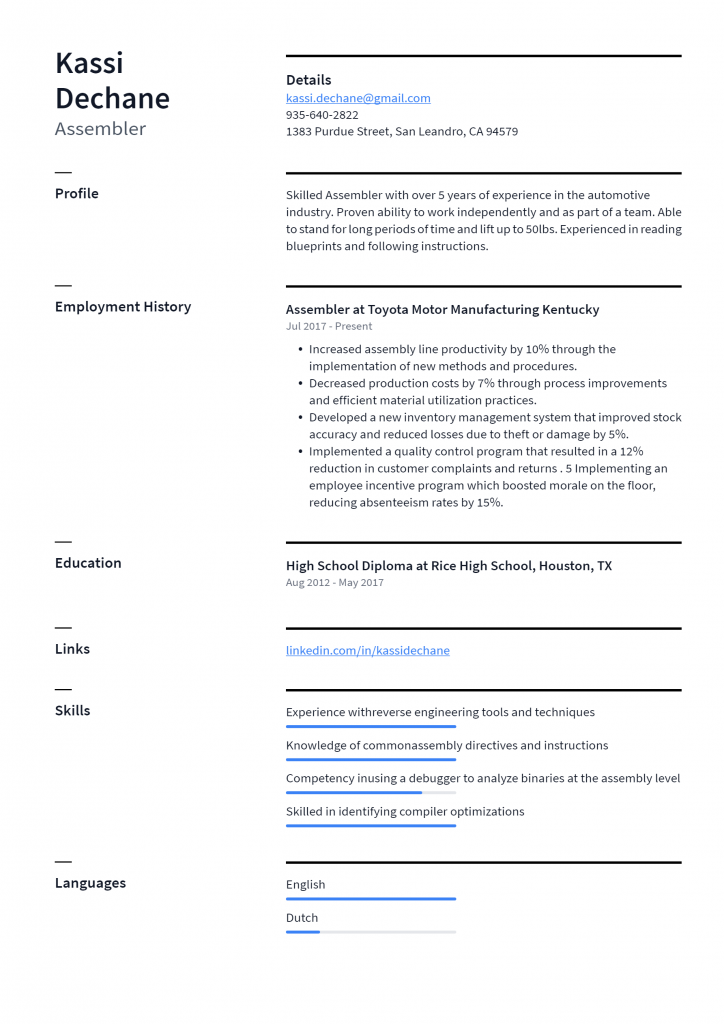
Download This Assembler Resume as PDF
Assembler I Resume Example
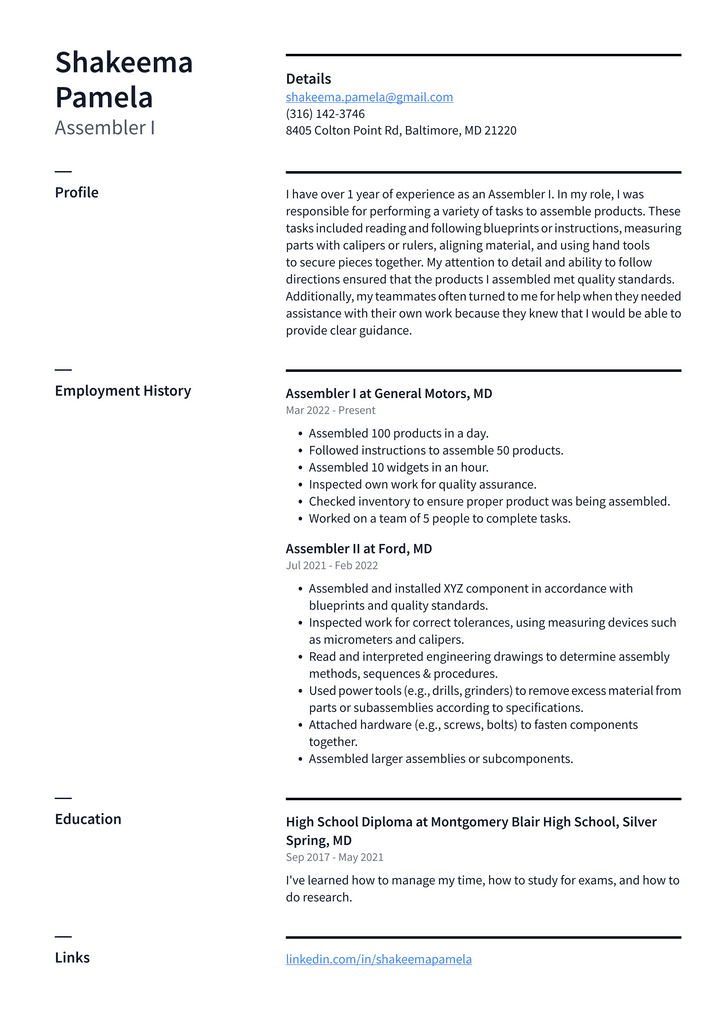
Download This Assembler I Resume as PDF
Assembler II Resume Example
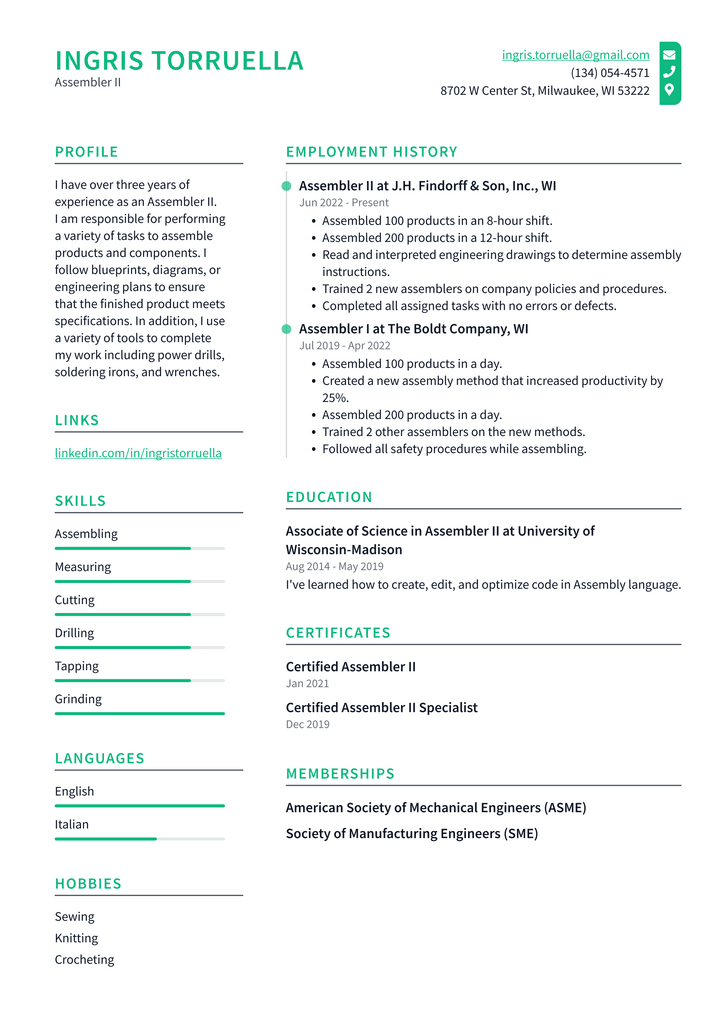
Download This Assembler II Resume as PDF
Assembler III Resume Example
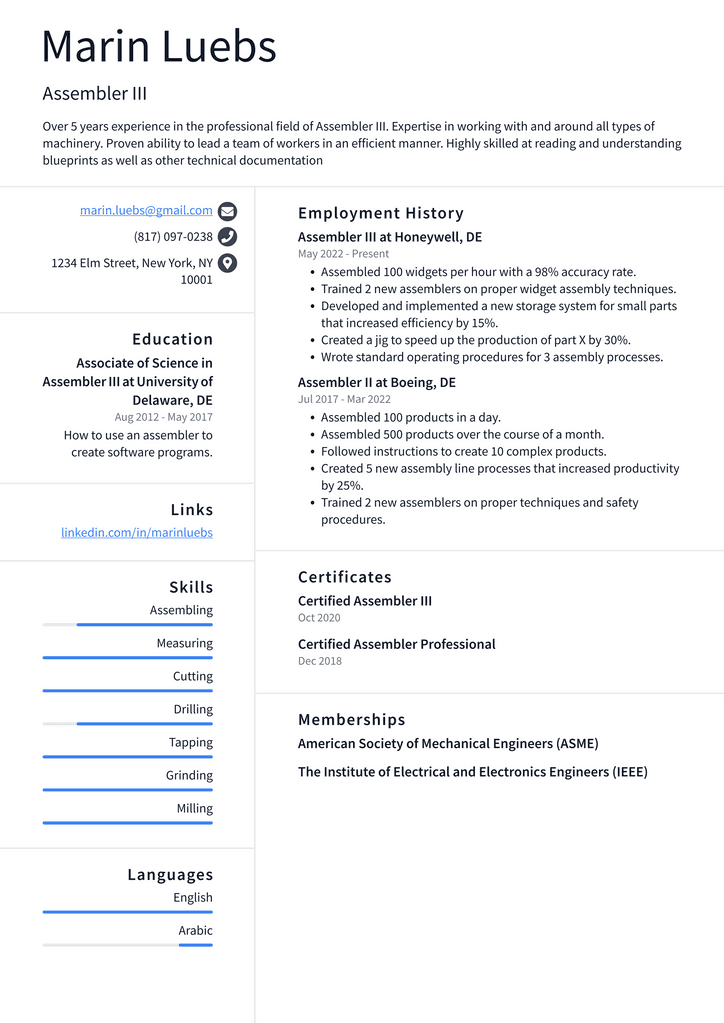
Download This Assembler III Resume as PDF
Assembler Lead Resume Example

Download This Assembler Lead Resume as PDF
Assembler Technician Resume Example
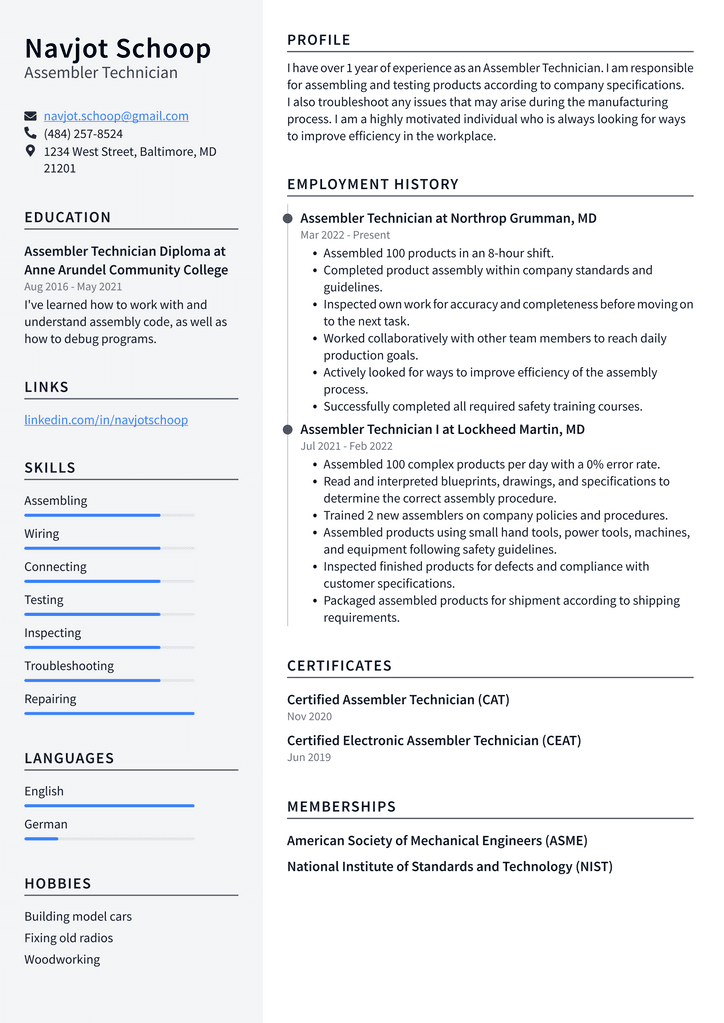
Download This Assembler Technician Resume as PDF
Assembler Supervisor Resume Example

Download This Assembler Supervisor Resume as PDF
Include only relevant information
Assembler resumes are often short and sweet, so you have to be very thoughtful about the information you choose to include. For example, if you have ten years of experience working in a factory, but the job posting is looking for someone with two years of experience, your entire experience section will be irrelevant. If switching careers, you’ll need to highlight your transferrable skills instead of specific job duties. For example, if you’re applying for a designer position at a tech company but have no design experience, you can’t put “graphic design” on your resume. Instead, you should explain how your experience in customer service can be applied to design. You could also try summarizing your education and work experience and adding “also applicable to design.”
Put your most impressive skills and experiences first
When deciding which items to put in your top section, think about what makes you the best candidate for the job. If the hiring manager were looking for someone with three years of experience operating CNC machines, you would put that information first. However, you should put your most impressive experience first if the job is open due to retirement. For example, if you were brought on board to train the person who retired and then later offered a position in their place, but that first. If you have transferrable skills, you can put them first instead of listing only your work experience first. This can help you connect with other industries, although you should be sure to explain how your skills apply to the job you’re applying for.
Use clear and easy-to-read fonts
There are many different fonts that you can use in your assembler resume, but you have to make sure that they are easy to read. You don’t want hiring managers squinting at your words because they’re trying to read them. If you’re using a font that doesn’t come standard on your computer, make sure it’s easily accessible. You can also use certain bold words or add italics to emphasize specific points, but don’t overdo them. Finally, ensure that your document’s font and layout are clean and easy to read.
Be sure to have an email address listed
Many job listings require that you submit your resume and cover letter via email. If an email address is not listed on your resume, hiring managers and recruiters will have difficulty getting in touch with you. You can list your email address at the top of your resume or the job application itself. If you do so, make sure your address is professional and clean. Avoid silly nicknames, abbreviations, or anything that makes you seem unprofessional.
Summing up
An assembler resume is an excellent opportunity to showcase your technical and organizational skills and emphasize what sets you apart from other applicants. When putting together your resume, include only relevant information, put your most impressive skills and experiences first, use clear and easy-to-read fonts, and have an email address listed. Now that you understand what makes for an excellent assembler resume, you can create an impressive document to help you get the job you want.